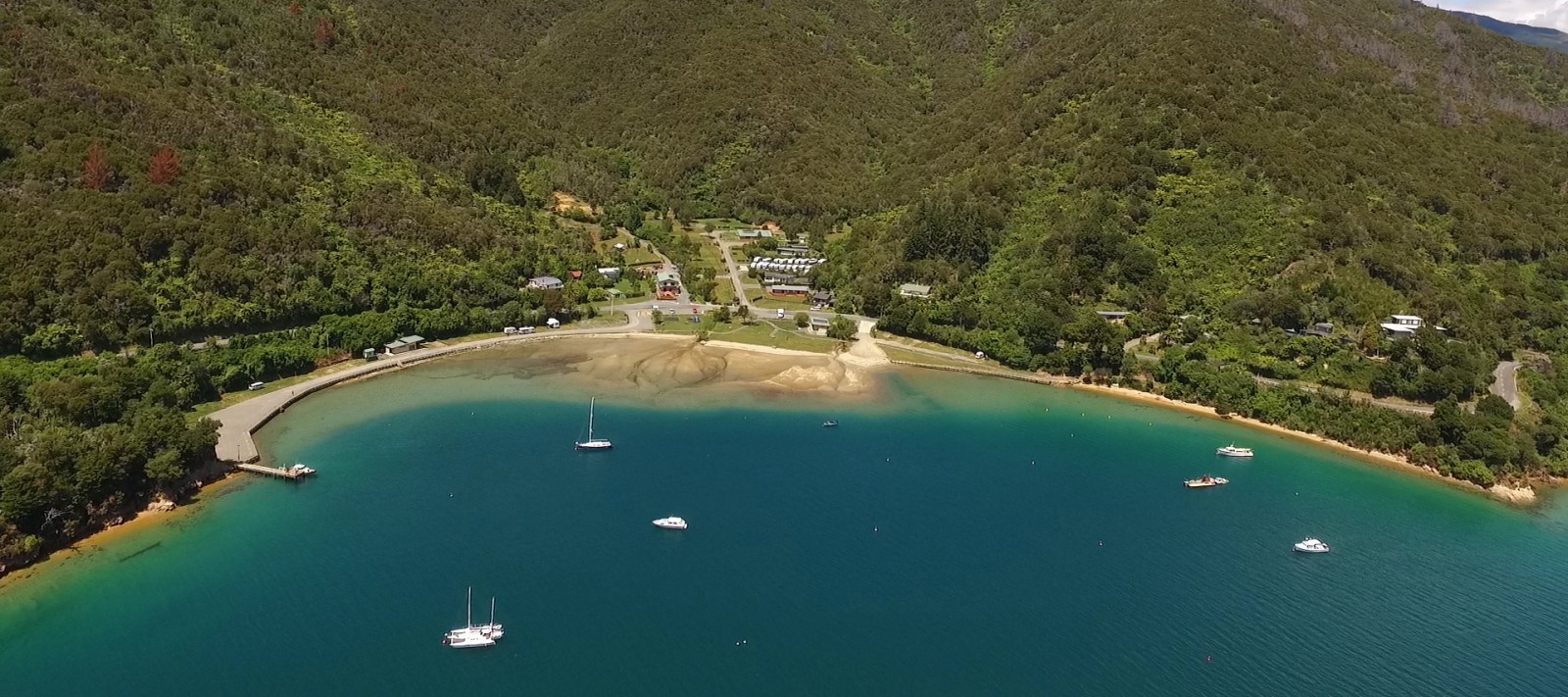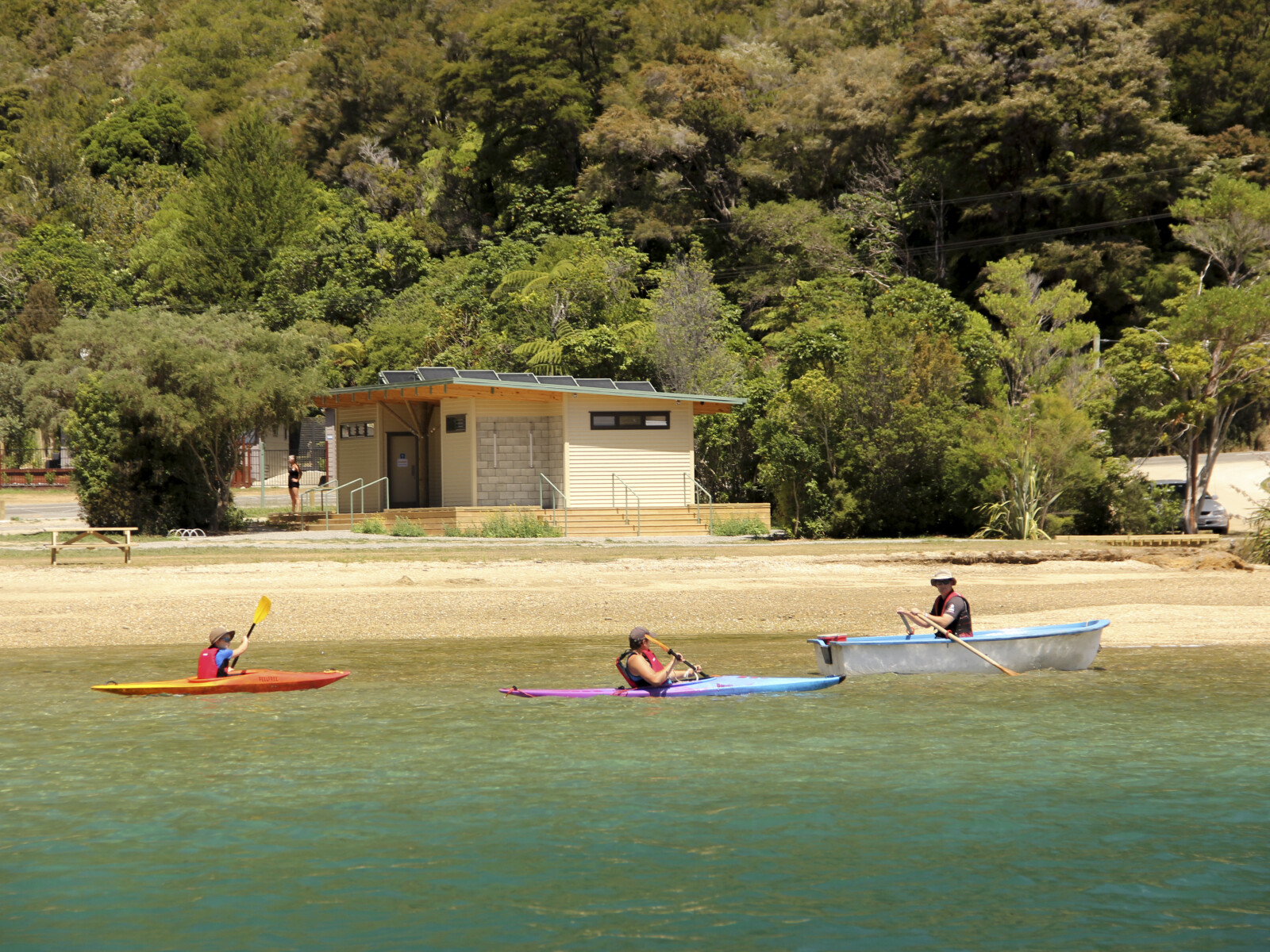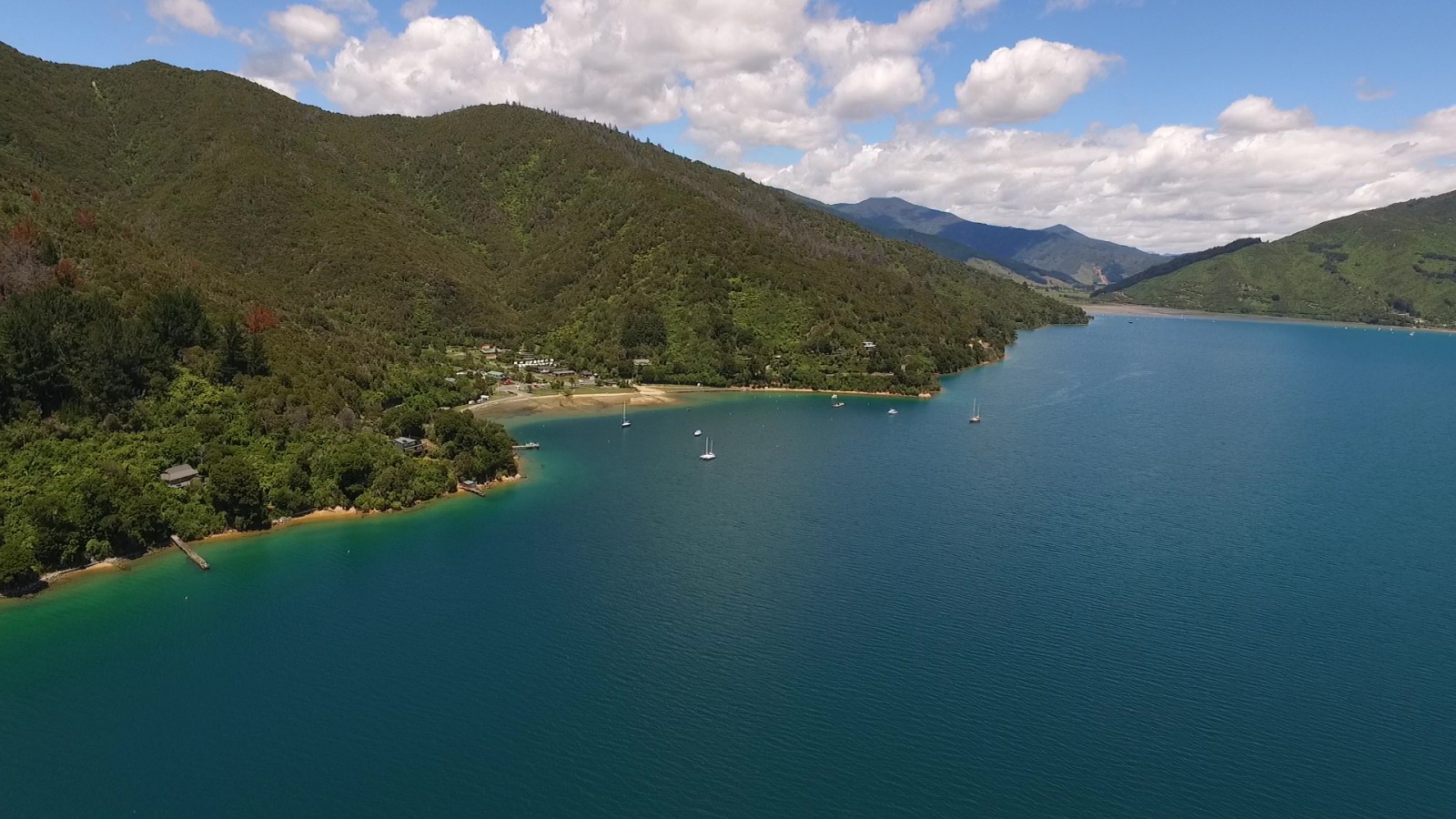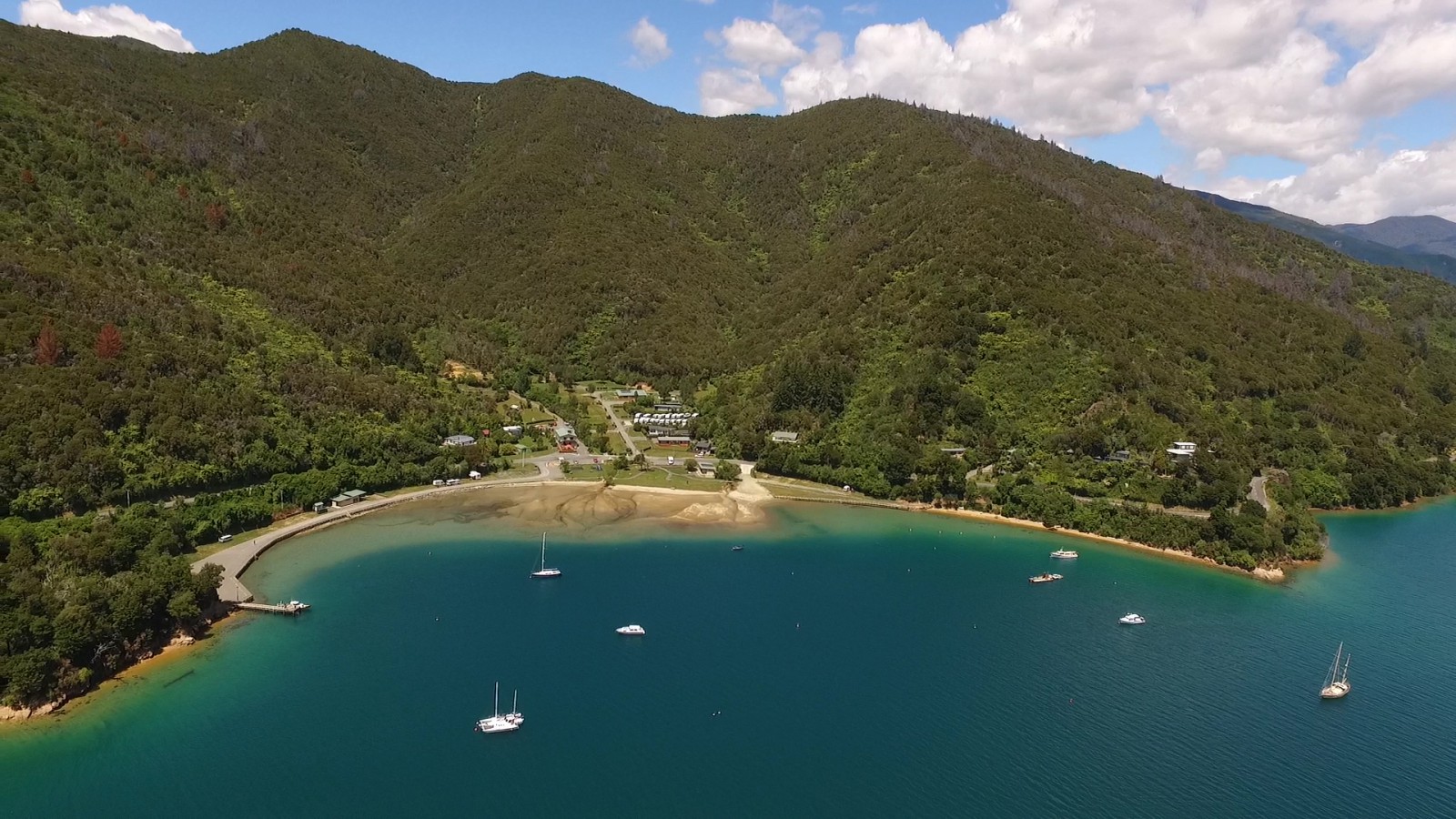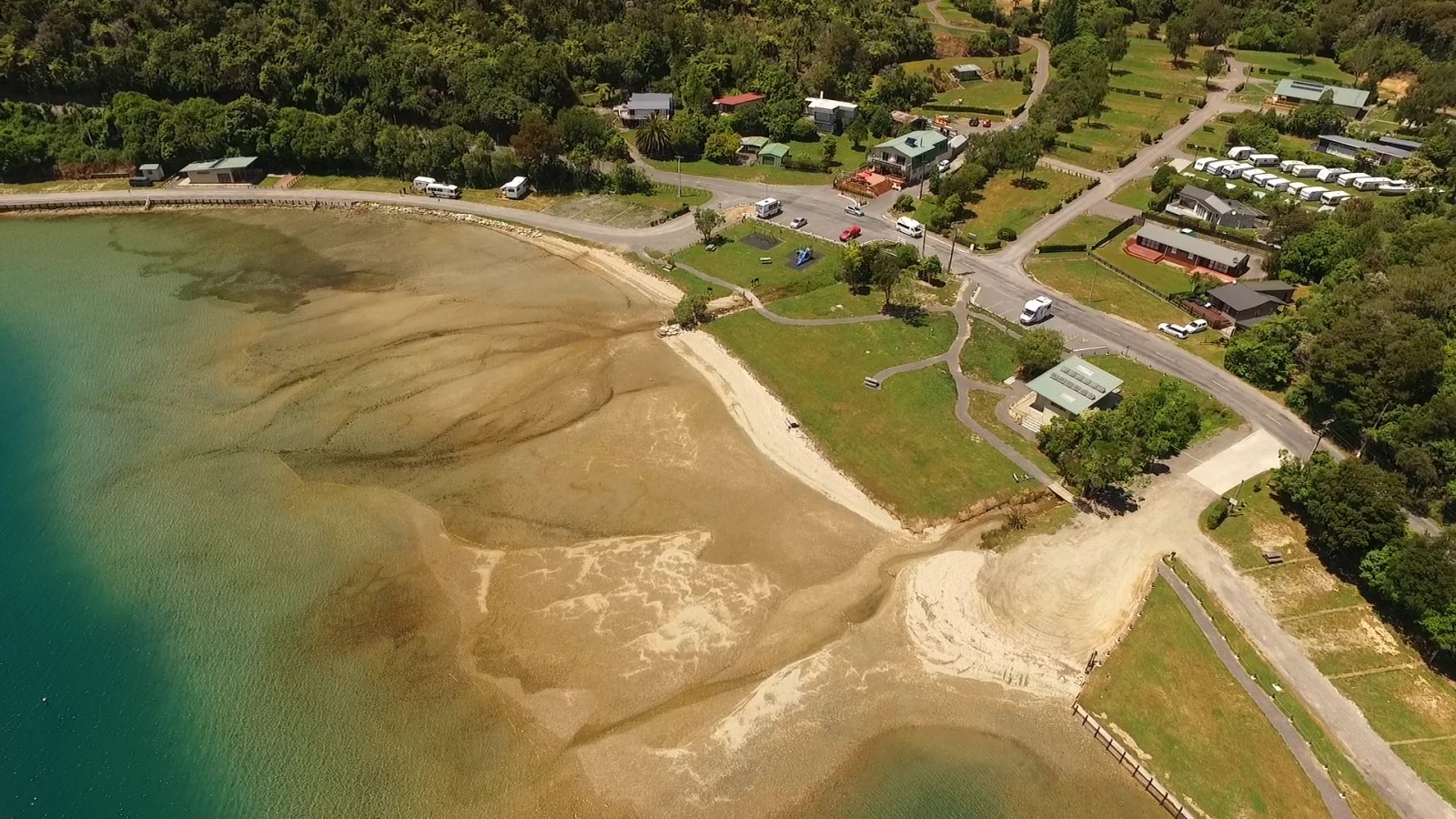Momorangi means 'myriad of descendants from the heavens' or ‘the off-spring of heaven’. 1
A succession of Māori, most probably hapū (subtribes) of Te Ātiawa, lived in the bay prior to European arrival. The area was used for food gathering and temporary settlement. The bay may also have been used as a school for children from the nearby pā at Ngakuta Bay.2
Due to significant earthworks in the twentieth century no evidence of this occupation now exists.
Momorangi Bay also has a history of farming and most of the slopes were in grassland from the 1860s onwards. Repeated burning was required to keep the scrub (manuka and kanuka) under control.

Bushmen's camp at Momorangi, 1907. Courtesy, Picton Historical Society.
Farming ceased in 1954 when the hillslopes were gazetted for a scenic reserve. At a similar time, the flat ground in the bay was turned into a recreation reserve. This area has since become a popular picnic spot with a playground and toilet facilities. The nearby Department of Conservation (DOC) camping ground also has a shop.
Since farming ended in the mid 1950s, the forest has regenerated with predominantly mānuka on the higher slopes and kānuka on the lower slopes. Species such as five finger, māhoe, kāmahi, kōhūhū, rangiora and ponga are present under the canopy but larger forest trees, such as black beech, tōtara and swamp maire are still to regenerate. A significant number of bird species can also be found in the regenerating bush, including pīwakawaka, kererū and tūī. 3
1. W. H. Sherwood Roberts, “Maori Nomenclature: Maori Names of Places in the Provincial District of Marlborough,” Marlborough Express, Volume XXXVII, Issue 210, 5 September 1903, Supplement, accessed January 9, 2018, http://paperspast.natlib.govt.nz/newspapers/MEX19030912.2.58.2
2. Marlborough District Council, Nelson City Council and Tasman District Council, “Te Tau Ihu Statutory Acknowledgements 2014”, accessed July 18, 2018, http://www.nelson.govt.nz/assets/Environment/Downloads/TeTauIhu-StatutoryAcknowledgements.pdf .
3. “Momorangi field trip resource”, Department of Conservation, accessed June 1, 2021, https://www.doc.govt.nz/get-involved/conservation-education/resources/local-field-trips/marlborough/momorangi-field-trip-resource/

